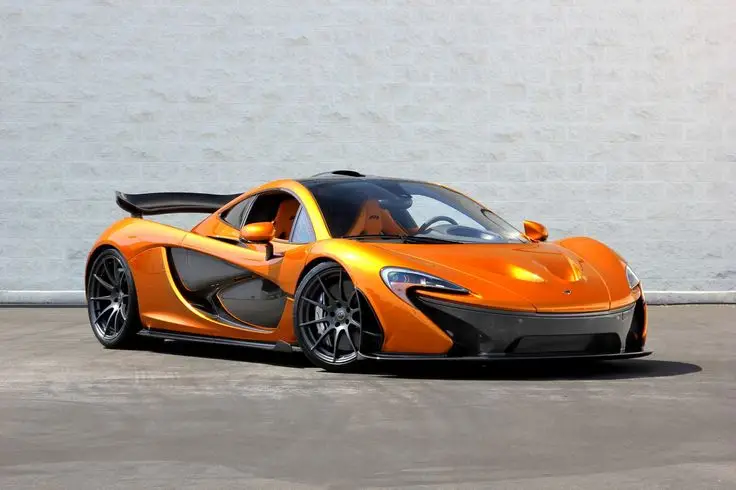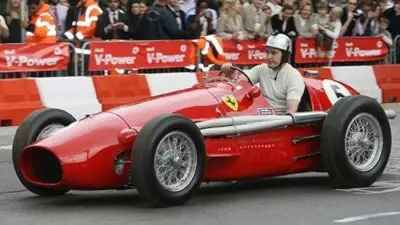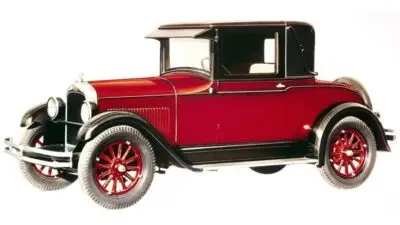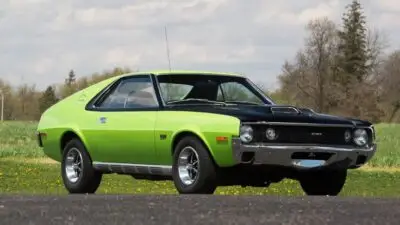British sports cars have captured the hearts of automotive enthusiasts around the globe for decades. These nimble, stylish machines represent more than just transportation—they embody a unique blend of handling prowess, distinctive design, and mechanical character that larger manufacturers often struggle to replicate. Despite facing reliability issues and the demise of many original manufacturers, British sports cars continue to maintain a devoted following worldwide because they deliver an authentic, engaging driving experience that modern vehicles rarely match.

From the iconic Jaguar E-Type to the humble MG Midget, these vehicles have left an indelible mark on automotive culture. They were the only game in town for sports car enthusiasts in many markets during the 1960s and 1970s. Their enduring appeal has spawned a massive subculture and aftermarket ecosystem that keeps these classics on the road long after their original makers disappeared.
Key Takeaways
- British sports cars deliver a pure, engaging driving experience that creates emotional connections with enthusiasts worldwide.
- A robust aftermarket ecosystem supports these vehicles decades after the original manufacturers ceased production.
- Despite their mechanical quirks, these automobiles continue to influence modern sports car design and maintain strong collector appeal.
The Origin and Evolution of British Sports Cars

British sports cars emerged from a rich heritage of engineering excellence and racing passion that dates back to the early 20th century. These vehicles combined performance, style, and character to create a lasting legacy in the automotive world.
A Journey Through Automotive History
The story of British sports cars begins in the 1920s and 1930s, when manufacturers started producing lightweight, nimble vehicles designed for both racing and enjoyment. Companies like MG and Triumph led the way with affordable models that brought the sports car experience to middle-class drivers.
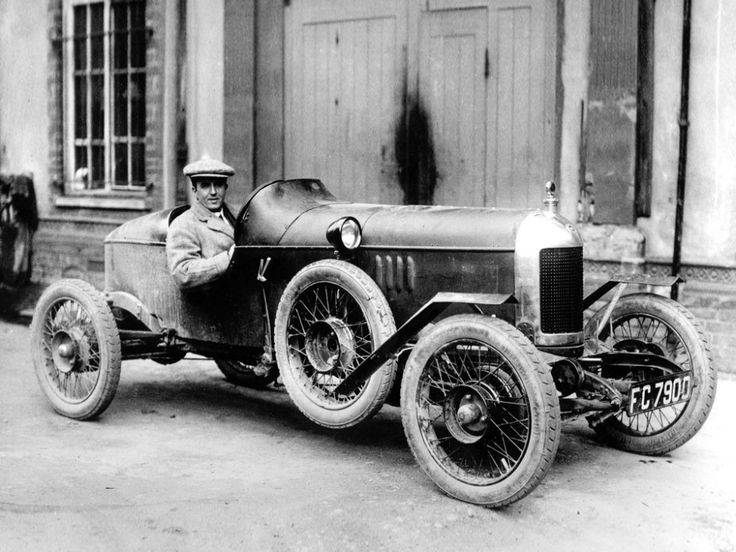
World War II temporarily halted production, but the post-war period saw an explosion in British sports car development. This era is often called the “Golden Age” of British automotive history, spanning roughly from the late 1940s through the 1960s.
These cars gained tremendous popularity in export markets, particularly the United States. American soldiers stationed in Britain during WWII often returned home with a taste for these nimble machines, creating a substantial market overseas.
Iconic British Sports Car Brands
Several manufacturers defined the British sports car landscape:
- Jaguar: Known for the legendary E-Type and XK series
- Aston Martin: Crafted sophisticated grand tourers and became famous through James Bond films
- MG: Produced accessible sports cars like the MGA and MGB
- Triumph: Created the popular TR series and Spitfire
- Lotus: Founded by Colin Chapman with a focus on lightweight construction
Each brand developed distinctive characteristics while maintaining quintessentially British design elements. These manufacturers emphasized handling and driver engagement rather than raw power alone.
Morgan stands out as unique among these brands, maintaining traditional construction methods using wood frames and hand-formed body panels well into the modern era.
Technological Advancements and Design
British sports car innovation often focused on improving handling through lightweight construction rather than simply adding power. Lotus founder Colin Chapman famously followed the philosophy of “simplify, then add lightness.”
Key technological contributions included:
- Independent suspension systems
- Disc brakes (Jaguar pioneered their use in production cars)
- Monocoque construction (replacing separate chassis designs)
Design elements typically featured clean lines, minimal ornamentation, and driver-focused cockpits. British cars often prioritized feel and feedback over comfort and convenience features.
Engineering solutions were frequently clever but cost-effective, allowing smaller manufacturers to compete with larger companies. This practical innovation approach created cars with distinctive character that enthusiasts continue to cherish for their unique driving experience.
Cultural Impact and Global Appeal

British sports cars have shaped automotive culture around the world for decades. Their distinctive design, performance characteristics, and associations with luxury have made them fixtures in popular culture and desirable status symbols across continents.
British Sports Cars in Media and Cinema
British sports cars have featured prominently in films and television, cementing their place in popular culture. The Aston Martin DB5 became an instant icon when it appeared as James Bond’s vehicle in “Goldfinger” (1964), establishing a relationship between the British spy and British sports cars that continues today.
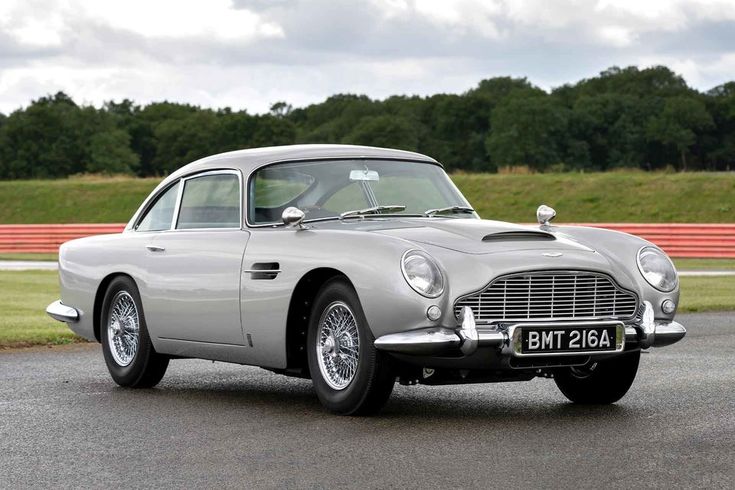
The Jaguar E-Type achieved worldwide renown between 1961 and 1974 and continues to make cultural appearances. Enzo Ferrari famously called it “the most beautiful car ever made,” a quote that still appears in automotive literature.
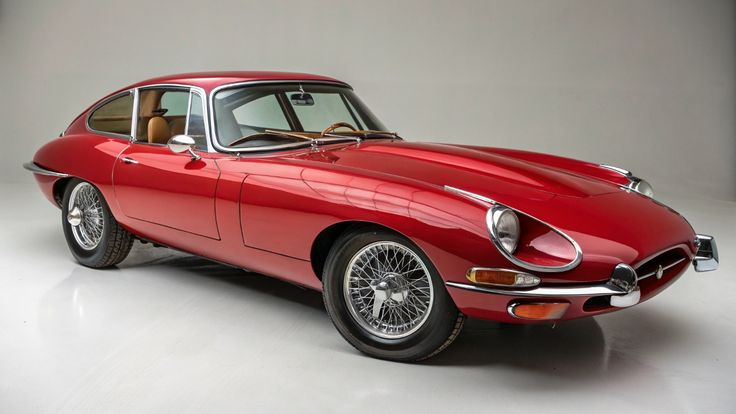
In television, shows like “The Saint” featuring the Volvo P1800 (though Swedish, it was designed by a British team) helped popularize the sleek sports car aesthetic globally. These media appearances helped transform British sports cars from mere vehicles into cultural symbols.

Symbol of Status and Luxury
British sports cars have long represented sophistication and prestige in the automotive world. Brands like Bentley, Aston Martin, and Jaguar convey immediate status to their owners.
The exclusivity of these vehicles, often produced in limited numbers with high-quality craftsmanship, enhances their appeal as luxury items. Many models feature hand-stitched leather interiors, bespoke options, and traditional manufacturing techniques that mass-produced vehicles lack.
British sports cars have set standards in design and engineering, influencing sports car manufacturing worldwide. Their distinctive styling elements—long hoods, sleek profiles, and graceful curves—have become design hallmarks that luxury automakers everywhere seek to emulate.
These vehicles often appear at prestigious events like Goodwood Festival of Speed and Pebble Beach Concours d’Elegance, further cementing their status as luxury objects.
International Fan Base and Clubs
British sports cars enjoy devoted followings across continents. Enthusiast clubs exist in nearly every country, from America to Japan, where members gather to celebrate these vehicles.
Baby boomers who remembered British two-seaters when they were new formed the foundation of this international culture. Today, younger generations continue this tradition, organizing rallies, restoration projects, and social events centered around their shared passion.
Annual gatherings like “British Car Day” occur in countries far from the UK, drawing hundreds of vehicles and thousands of spectators. Online communities have expanded this reach further, with forums and social media groups dedicated to specific marques and models.
The technical knowledge required to maintain these often temperamental machines has created a unique subculture of mechanics and restorers specialized in British sports cars, supporting the global community of owners who keep these automotive legends on the road.
Performance and Engineering Excellence

British sports cars stand out globally for their exceptional mechanical prowess and attention to detail. These vehicles combine innovative technologies with traditional craftsmanship to deliver unforgettable driving experiences.
Innovation in Performance Engineering
British car manufacturers have consistently pushed engineering boundaries throughout automotive history. Companies like Aston Martin focus on creating ultra-luxury performance cars that combine power with sophisticated handling characteristics.
The lightweight chassis designs pioneered by British manufacturers revolutionized sports car performance. This approach prioritizes power-to-weight ratio over raw horsepower, creating nimble vehicles that excel on winding roads.
Many British sports cars feature innovative suspension systems that balance comfort with responsive handling. These engineering solutions allow drivers to feel connected to the road without sacrificing ride quality.
Advanced aerodynamics represent another area where British engineers excel. From early streamlined bodies to modern active systems, these innovations improve both stability and efficiency at high speeds.
Craftsmanship and Customization
British sports cars are renowned for their impeccable craftsmanship and attention to detail. Hand-stitched leather interiors, polished wood dashboards, and meticulously finished bodywork showcase the dedication to quality.
Customization options allow buyers to create truly personal vehicles. Options include:
- Bespoke paint colors
- Hand-selected leather hides
- Custom interior trims
- Personalized mechanical specifications
- Unique exterior details
This commitment to individualization means no two British sports cars are exactly alike. Each vehicle represents a collaboration between customer desires and manufacturer expertise.
Traditional construction methods continue alongside modern techniques. Many manufacturers maintain specialized teams of craftspeople who train for years to master specific skills in woodworking, metalwork, and upholstery.
Racing Pedigree and Motorsport Triumphs
British sports cars have achieved remarkable success in racing excellence, establishing legendary reputations at venues like Le Mans, Monaco, and Silverstone. These competition victories directly influence road car development.
Brands like MG built their identities around motorsport achievements. Racing innovations that later appeared in production models include:
Track-to-Road Innovations:
- Disc brakes
- Independent suspension systems
- Aerodynamic body designs
- Lightweight construction materials
British teams have dominated Formula 1, with constructors like McLaren, Williams, and Lotus accumulating numerous championships. This racing DNA transfers to their road cars, creating vehicles that deliver thrilling performance.
The motorsport influence extends beyond technology to driving dynamics. British sports cars prioritize feedback and driver engagement, creating machines that reward skilled operators with exceptional experiences.
Ownership and Exclusivity

Owning a British sports car involves unique experiences from purchase through maintenance and eventual resale, setting these vehicles apart from mainstream automobiles.
The Buying Experience
Purchasing a British sports car typically involves more than just a financial transaction. Many dealerships specializing in these vehicles create an atmosphere of exclusivity and heritage. Buyers often receive personalized attention, detailed vehicle histories, and sometimes even factory tours for new models.
For classic British sports cars, the buying process frequently connects enthusiasts with specialized dealers or private sellers who share their passion. Many British car manufacturers emphasize the handcrafted elements of their vehicles during the sales process.
Waiting lists for limited production models are common, enhancing the sense of exclusivity. Some manufacturers like Morgan still maintain traditional construction methods, making each purchase feel like acquiring a piece of automotive history.
Maintaining a Classic
British sports cars require dedicated maintenance routines that differ from mass-produced vehicles. Their specialized components and engineering quirks demand knowledgeable mechanics or a willingness to learn DIY maintenance.
Maintenance costs typically exceed those of everyday cars, with parts sometimes being rare or requiring fabrication. However, robust owner communities provide invaluable support through:
- Online forums with troubleshooting guides
- Specialized independent mechanics
- Clubs that organize maintenance workshops
- Parts sharing networks
The craftsmanship of these vehicles means that proper maintenance can extend their lifespan significantly. Many owners develop close relationships with mechanics who understand the peculiarities of models like Triumphs, MGs, and Jaguars.
Resale Value and Collectability
British sports cars often maintain strong resale values, particularly limited-edition models and well-preserved classics. Vehicles with documented histories, original components, and low mileage command premium prices in the collector market.
Market trends show varying patterns across different eras of British sports cars. While some younger collectors show less interest in certain 1950s-70s models, iconic vehicles like the Jaguar E-Type continue appreciating.
Factors affecting collectability include:
- Production numbers
- Racing heritage
- Celebrity ownership history
- Technical innovations
- Design significance
Conservation-grade restorations, which preserve originality while ensuring drivability, typically yield the best investment returns. Insurance companies now offer specialized policies for collector British sports cars, recognizing their unique value propositions beyond mere transportation.
Challenges and Future Trends

British sports cars face significant hurdles in today’s automotive landscape while simultaneously exploring innovative paths forward. Market shifts, technological demands, and environmental concerns create both obstacles and opportunities for these iconic vehicles.
Environmental Concerns and Innovation
British sports car manufacturers are adapting to stricter emissions regulations by developing hybrid and electric models. Jaguar has committed to becoming an all-electric brand by 2025, while Aston Martin plans to offer hybrid versions of its entire lineup before transitioning to full electrification.
These changes present engineering challenges unique to British sports cars, which have traditionally emphasized lightweight construction and driver engagement. Engineers must balance adding battery weight with maintaining the nimble handling enthusiasts expect.
Small manufacturers like Morgan and Lotus face particular difficulties meeting compliance costs. However, this transition also creates opportunities for innovation. Lotus’s Evija hypercar demonstrates how British brands can embrace electric power while maintaining performance credentials.
The Future of British Sports Cars in a Changing Market
Young buyers show less interest in traditional British sports cars compared to previous generations. This demographic shift threatens the long-term market for classics from MG, Triumph, and Austin-Healey.
Modern British manufacturers are responding by creating more accessible models. Aston Martin’s Valhalla and McLaren’s Artura target broader audiences while maintaining performance credentials. Digital features and modern amenities now complement traditional craftsmanship.
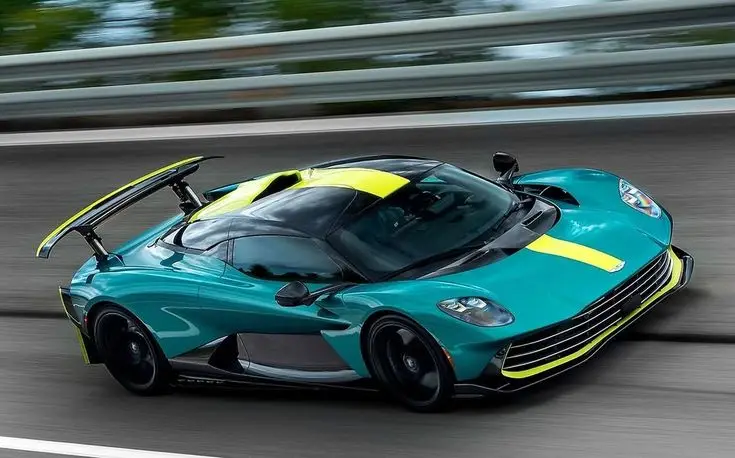
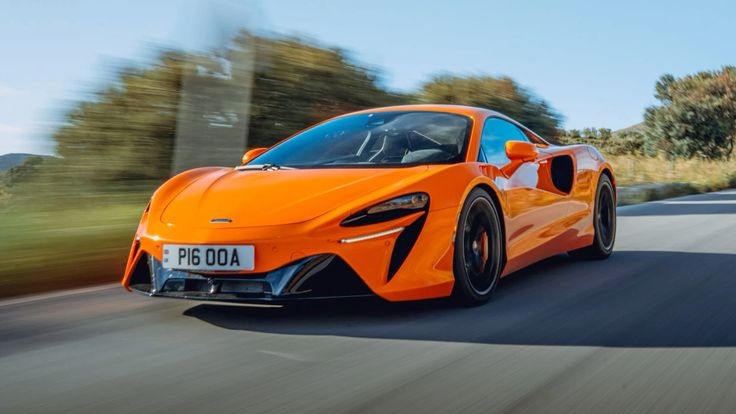
Global partnerships provide another survival strategy. Chinese investment supports MG’s revival, while Geely’s ownership has revitalized Lotus. These relationships provide crucial capital for research and development.
Heritage remains a powerful selling point. British sports cars with distinctive design and driving experiences continue attracting enthusiasts seeking alternatives to mainstream vehicles. Brands that successfully balance tradition with innovation will likely thrive in tomorrow’s automotive landscape.
Frequently Asked Questions

British sports cars have earned their place in automotive hearts through distinctive design, engineering innovation, and cultural impact. These vehicles combine heritage with performance elements that continue to influence the industry today.
What factors contribute to the global popularity of British sports cars?
British sports cars are disproportionately popular among older enthusiasts despite their general affordability. This popularity stems from their distinctive styling that emphasizes elegant curves and compact dimensions.
The strong heritage and racing pedigree of British manufacturers like Jaguar, Lotus, and Aston Martin create emotional connections with drivers worldwide. These cars offer an authentic driving experience with responsive handling and driver engagement.
British sports cars also benefit from their frequent appearances in popular culture, especially in films and television shows that showcase their sophistication and performance capabilities.
How have classic British sports cars influenced modern vehicle design?
Classic British sports cars established design principles that continue to influence contemporary vehicles. The low-slung profile and aerodynamic shapes pioneered by brands like Jaguar have become standard elements in sports car design globally.
The pursuit of speed and innovation that characterized early British sports cars pushed engineering boundaries in ways that benefit modern cars. Lightweight construction techniques first employed by Lotus now appear in high-performance vehicles of all nationalities.
Interior layouts that prioritize driver engagement and cockpit-like designs originated in British sports cars before becoming industry standards for performance vehicles.
What distinguishes British sports cars from American and other European models?
British sports cars typically feature more compact dimensions and lighter weight compared to American muscle cars, focusing on handling precision rather than straight-line speed. They emphasize balance and cornering ability over raw power.
Unlike their German counterparts that often prioritize technical precision, British models traditionally embrace character and driving feel, sometimes at the expense of absolute reliability.
British sports cars are known for their distinctive exhaust notes and tactile feedback, creating a more sensory driving experience than many competitors from other countries.
Which British sports car models are considered iconic in automotive history?
The Jaguar E-Type stands as perhaps the most celebrated British sports car, with Enzo Ferrari famously declaring it the most beautiful car ever made. Its long hood and perfect proportions made it instantly recognizable.
The Aston Martin DB5 gained worldwide fame through its association with James Bond films, becoming a symbol of British automotive sophistication and performance.
The lightweight Lotus Elan established the “simplify, then add lightness” philosophy that influenced sports car development for decades. Other icons include the MGB, Triumph TR6, and the McLaren F1 supercar.
What are the characteristics of luxury British sports car brands compared to others?
British luxury sports car brands like Aston Martin and Bentley emphasize superior craftsmanship and bespoke options that allow extensive personalization. This handcrafted approach contrasts with the more standardized production methods of many competitors.
These manufacturers typically blend traditional materials like wood, leather, and aluminum with modern technology. The interiors feature artisanal details rather than purely technological showcases.
British luxury sports cars also tend to maintain distinctive brand identities with evolutionary rather than revolutionary design changes, preserving heritage while incorporating modern performance capabilities.
How do British sports cars maintain a balance between performance and affordability?
Many British sports cars historically achieved an excellent performance-to-price ratio by using innovative engineering rather than expensive materials or high-displacement engines. Brands like MG and Triumph delivered engaging driving experiences at accessible price points.
British manufacturers often specialized in lightweight construction techniques that enhanced performance without requiring powerful and expensive engines. This approach made sports car ownership possible for a broader audience.
The used market for classic British sports cars remains relatively affordable compared to Italian or German counterparts, allowing enthusiasts to experience their unique character without the premium prices of other European classics.
